What Does a Winged Lion Symbolize?
The winged lion, also known as the Griffin in some cultures, holds a significant place in mythology and symbolism across various civilizations. From ancient Mesopotamia to Egypt and Persia, the winged lion has captured the imagination and continues to intrigue us with its majestic presence.
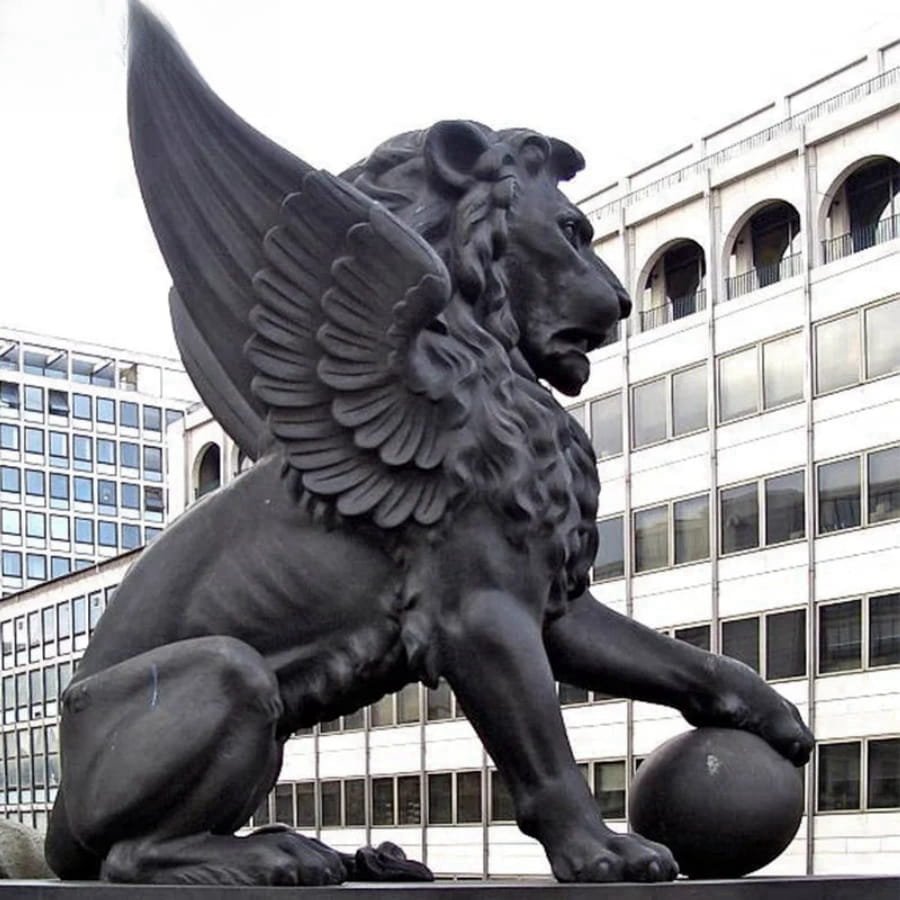
The Winged Lion in Mythology
In Mesopotamian, Persian, and Egyptian mythology, the winged lion is a mythical creature that combines the features of a lion and an eagle. This hybrid creature represents a fusion of strength, courage, and keen vision. It embodies the power and grace of both the king of beasts and the ruler of the skies.
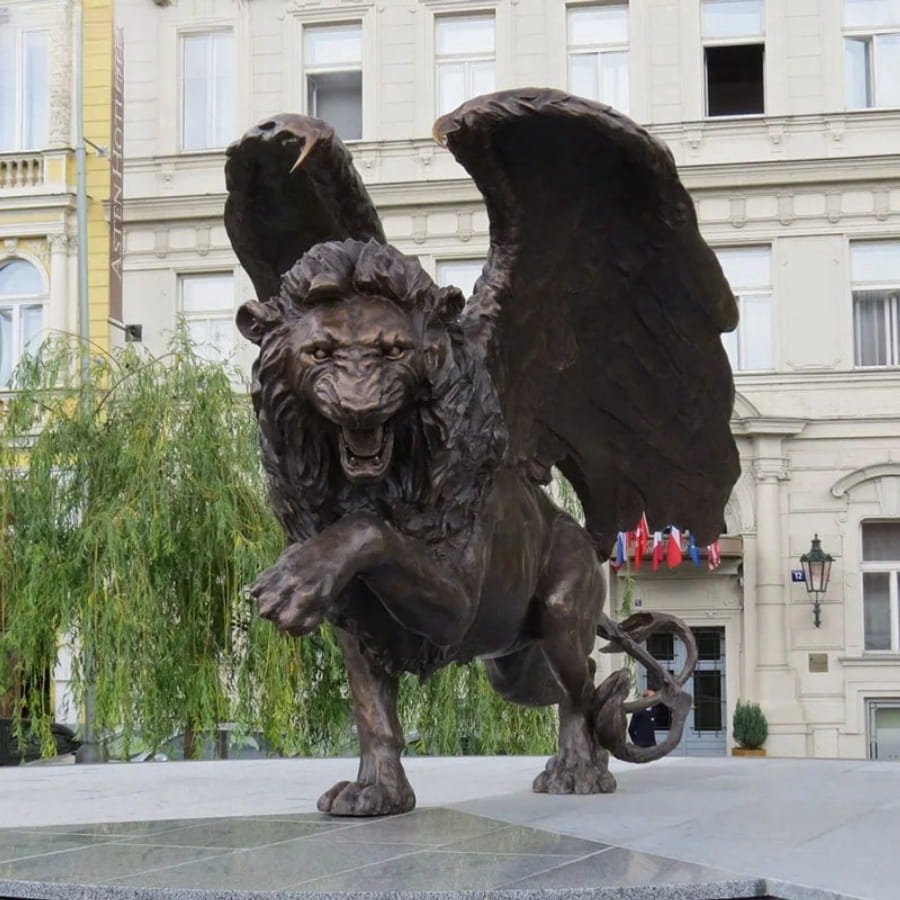
The Symbol of Saint Mark
One of the most well-known associations of the winged lion is its symbolism as the emblem of Saint Mark, one of the four evangelists in Christian tradition. The winged lion is often used to represent Saint Mark’s gospel, and it is a common sight in Christian art and architecture.
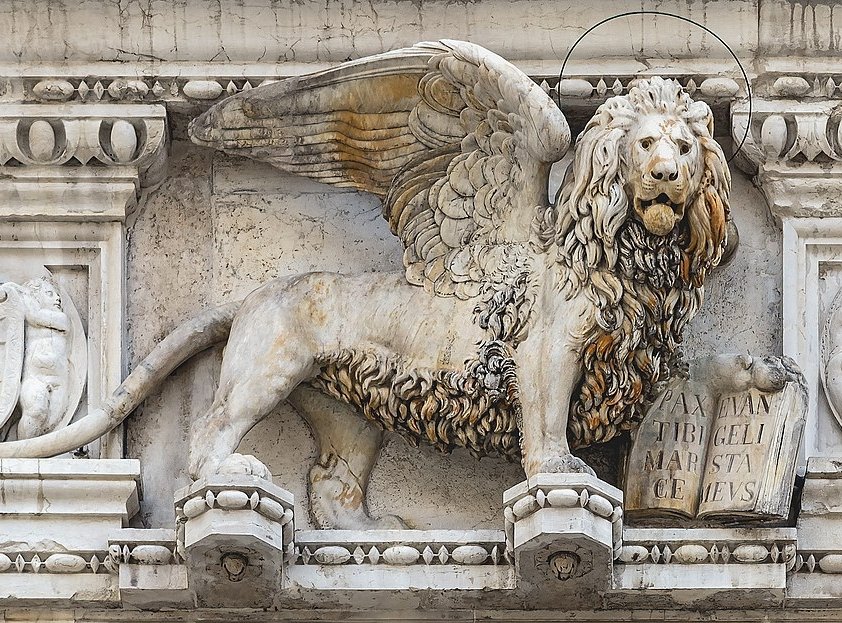
Source: Lion of Saint Mark
Power and Courage
Throughout history, the winged lion has been revered as a symbol of power and courage. Its combination of the lion’s strength and the eagle’s ability to soar above challenges represents a potent force that can overcome obstacles and protect its domain.
In ancient Assyrian and Persian cultures, the winged lion was often associated with the divine. It was seen as a guardian and protector, capable of warding off evil and ensuring the safety of cities and temples.

More Information: Outdoor Life Size Bronze Winged Lion Statue
The Winged Lion in Venice
Perhaps one of the most famous representations of the winged lion can be found in the city of Venice. The symbol of the winged lion, known as the Lion of Saint Mark, has been the emblem of Venice for centuries.
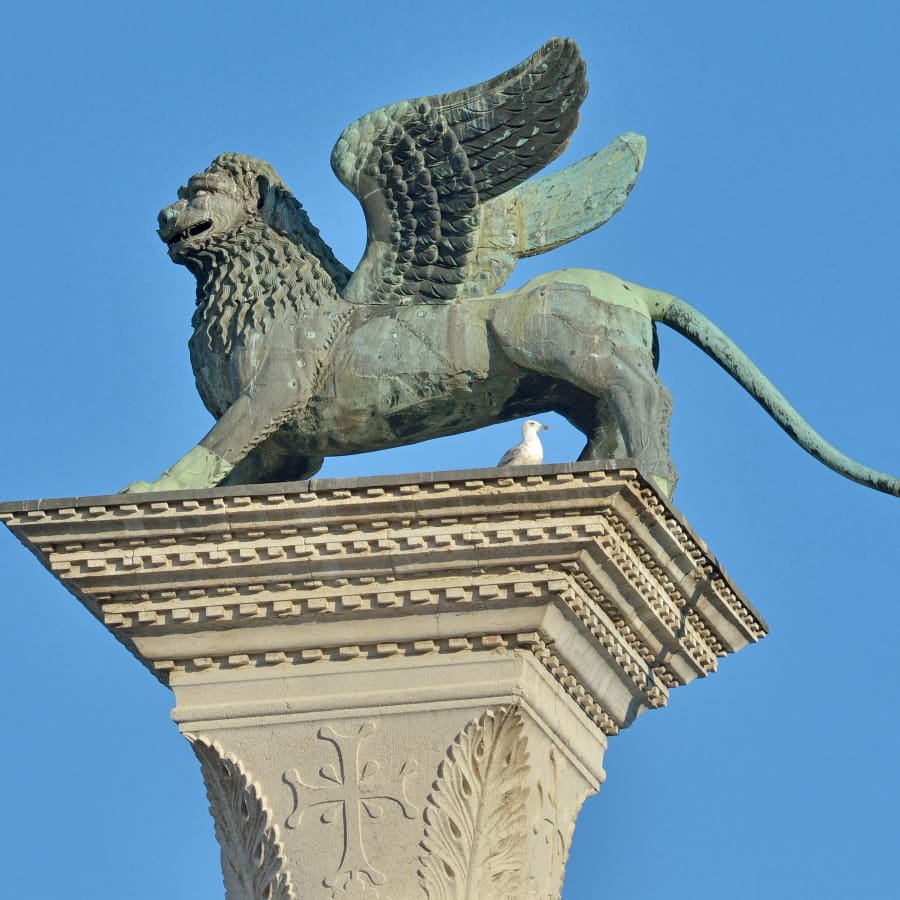
Source: Bronze Lion of Venice
The winged lion of Venice is a powerful symbol of the city’s rich history and maritime prowess. It represents the strength and resilience of the Venetian Republic and its ability to navigate the challenging waters of political and economic power.
Alchemy and the Winged Lion
In the realm of alchemy, the winged lion takes on a different meaning. It symbolizes the volatile and elusive nature of certain substances, representing the transformation and purification processes that alchemists sought to achieve.

Source: Alchemy and the Winged Lion
The winged lion serves as a reminder of the challenges and mysteries inherent in the pursuit of knowledge and transformation. It encourages us to embrace the unknown and to have the courage to explore new realms of understanding.
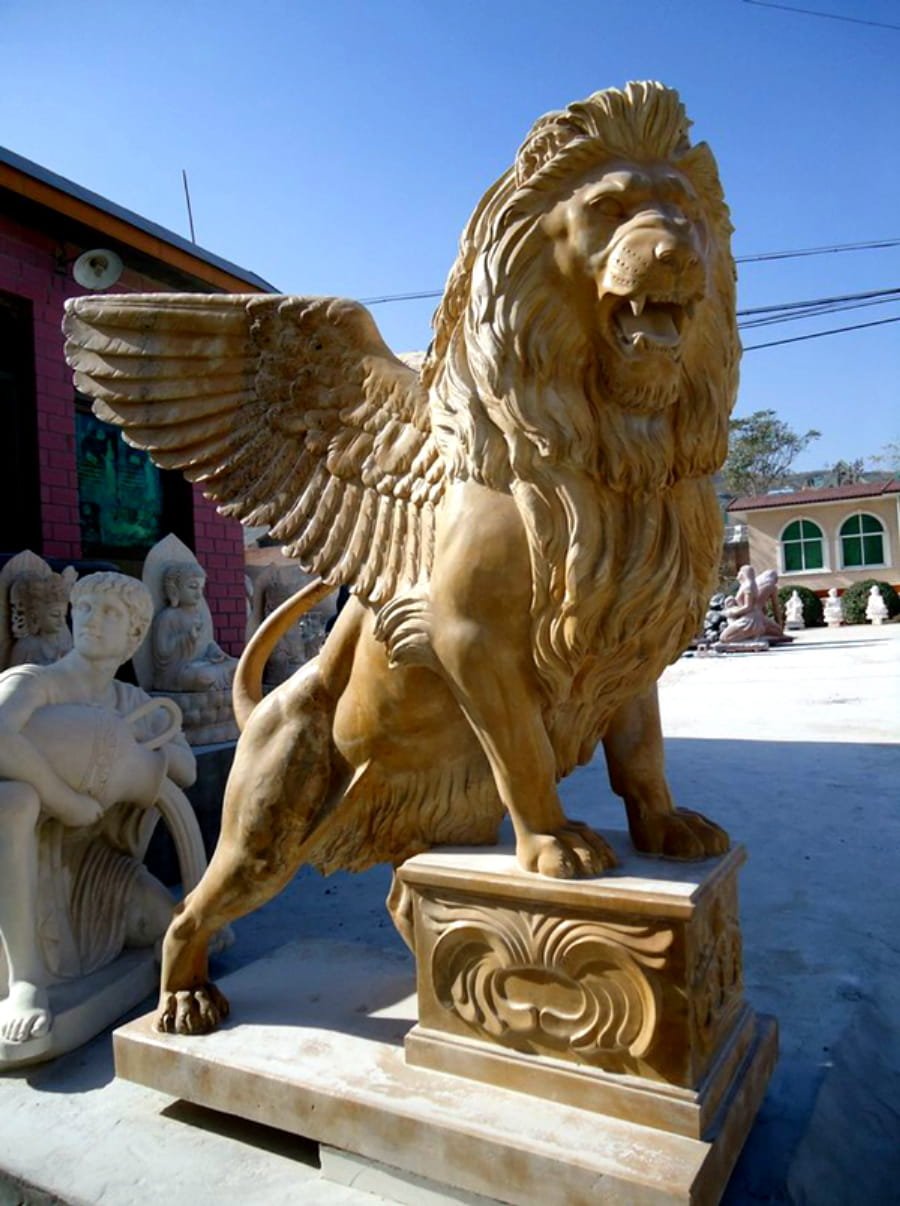

FAQs about Winged Lion Statues
1. What is the historical significance of winged lion statues?
Winged lion statues have been significant in various cultures, notably in ancient Mesopotamia, Persia, and Egypt. They often symbolized power, protection, and a divine presence, acting as guardians for cities and temples.
2. Where can one commonly find winged lion statues?
These statues are prevalent in historical sites and museums across the world. Notably, they are a prominent feature in Venice, Italy, where the winged lion symbolizes the patron Saint Mark.
3. Are winged lion statues associated with any religious beliefs?
Yes, in Christianity, the winged lion is often associated with Saint Mark the Evangelist. It’s seen as a symbol of courage and resurrection and is a common motif in Christian art and architecture.
4. What materials are used to make winged lion statues?
Historically, these statues have been made from various materials, including stone, bronze, and wood, depending on the era and culture of their creation.
5. How do winged lion statues differ in design across cultures?
The design varies, reflecting cultural influences. For example, Persian winged lions might feature more intricate designs, while those in Christian art are often depicted with a halo or a book, representing Saint Mark.
6. Can winged lion statues be found in modern architecture?
Yes, they continue to be a popular decorative element in modern architecture, often symbolizing strength, protection, and historical continuity.
7. Are there any famous winged lion statues that are must-sees for tourists?
The Lion of Saint Mark in Venice is particularly famous. Additionally, the ancient winged lions from Assyria, housed in museums like the British Museum, are also noteworthy.
8. Do winged lion statues have any symbolic meaning in literature or films?
In literature and films, these statues often symbolize nobility, bravery, and vigilance. They can represent both physical and spiritual strength.
9. How do winged lion statues differ from griffins?
While similar, griffins typically have the body of a lion and the head and wings of an eagle. Winged lions, on the other hand, retain the lion’s head but have added wings.
10. Are there any contemporary interpretations or uses of winged lion statues?
Contemporary artists and architects sometimes use winged lion statues in a symbolic manner, often referencing their historical and cultural significance while incorporating modern artistic elements.
11. Where Can I buy custom winged lion statues?
Winged lion statues can be custom made in bronze and stone marble. Mily Art Statue provides custom-made services for bronze lion statues and marble lion statues. Please feel free to contact sales@milystatue.com to get more info.

Conclusion
The symbolism of the winged lion is vast and multifaceted. It represents power, courage, divine protection, and the ability to transcend boundaries. Whether seen as a guardian in ancient civilizations or as the emblem of Saint Mark in Venice, the winged lion continues to capture our imagination and remind us of the strength and resilience within ourselves.


